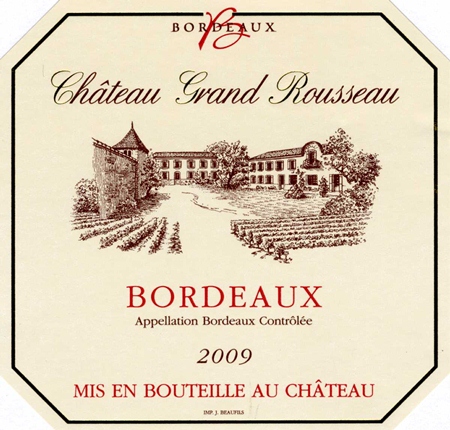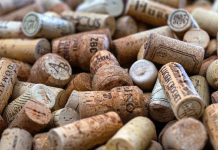If you mention the name “Bordeaux” to wine lovers, don’t be surprised if their eyes glaze over and their salivary glands get to work, like those of Pavlov’s slobbering dogs. Because you see, for most wine-lovers, Bordeaux is rather special.
So what can I tell you about Bordeaux that you don’t already know? Well, Bordeaux is in France. Of course, you know that. Even my dogs know that. I suppose Pavlov’s dogs knew that too. Furthermore, Bordeaux is almost half way between the North Pole and the Equator. To be more precise, it is two-thirds of the way down France’s Atlantic coast and on roughly the same latitude as Minneapolis and Montreal to the west; Vladivostok and Sapporo to the east. The Atlantic Ocean, the Gironde and Dordogne rivers, together with the warming effect of the Gulf Stream have a major effect on the climate. Even the name Bordeaux translates roughly as “next to the waters”. They’ve been making wine there since the 8th century and today, the region produces a staggering seven million bottles of wine each year, most of it red. Some of those bottles represent the finest – and most expensive – wines in the world. And perhaps surprisingly, Bordeaux wine labels rarely mention the grapes used, probably because the locals know anyway.
 Château Grand Rousseau label
Château Grand Rousseau label
Right. That’s all I’m going to say about Bordeaux. And I hope you made notes, because there will be a test later.
By the way, the red wines of Bordeaux are nearly always blended and used to be known in England as “claret”. But they’re not fun-loving types who enjoy a night out and a good laugh with the lads. Instead, they tend to be rather “stiff upper lip” chaps, in the sense that restraint, dryness, control, intensity of flavour and authority are desirable qualities. Anyway, let’s get to this week’s first wine. (And about time, too – Ed.)
Château Grand Rousseau 2009 (red) AC Bordeaux, France (Bt. 479 @ Foodland)
This château is in the beautiful Entre Deux Mers (“between two seas”) region, a triangle of land between the Dordogne and Garonne rivers, full of historical forts and castles, churches and monasteries. The Grand Rousseau vineyards cover nearly three hundred acres and are planted with Cabernet Sauvignon, Merlot and a small amount of Cabernet Franc all three of which are used to make this wine.
It’s a deep ruby-red, and has the classic aromas of forest fruits, cherry, blackcurrant with hints of violets, tobacco and herbs. Although very dry, it’s beautifully smooth and medium-bodied. There’s plenty of soft, rich fruit on the palate and you’ll probably recognise blackcurrant and blueberry with a kind of earthy vanilla taste in the background. There’s a slight dash of acidity too; good, firm tannins and quite a long dry finish with fruity hints. You’ll probably enjoy this wine if you prefer light, dry reds. With 13.5% alcohol content, it would be a good choice for most roasted meats or cheese dishes.
Château La Rose Picot 2009 (red) AC Medoc, France (Bt. 530 @ Friendship)
Unlike many Bordeaux wines, whose labels show drawings of imposing stately homes, this label shows what looks like a large garden shed. But appearances can be deceptive, for the wine is actually very good indeed, especially if you like claret with a bit of intensity. It’s a dark, purplish red with an aroma of very ripe black fruit and hints of oak and spices. The blend uses the same grape varieties as the Grand Rousseau with the addition of Petit Verdot. It’s a medium-bodied savoury wine with a smooth mouth-feel, and you might notice a spicy, peppery quality too, with dried herbs in the background and a dash of oaky woodiness.
In some ways this is rather a serious wine, with a solid foundation of dry tannins and a lingering finish. It will probably age well too. It’s quite a bit meatier than the Ch. Grand Rousseau, but has a distinctive touch of elegance. It also has 13.5% alcohol content but because of the heavier body, it could stand up to richer food. Incidentally, I’m not the only one to appreciate this wine, because it won a Gold Medal at the 2010 Berlin Wine Trophy.
Oh yes, the test. I’d almost forgotten. On second thoughts, you’ve been so well-behaved today that I’ll let you off – but just this once. We’ve run out of time, anyway.




